SI.BUDGETTURNOVER
Overview
The SI.BUDGETTURNOVER function returns the budgeted balance turnover of a GL account (within the specified reporting period or between two dates).
Syntax
=SI.BUDGETTURNOVER(
ConnectionName,
AccountGroup,
Account,
BudgetId,
FromDate,
ToDate,
LocationId,
Books,
Dimensions,
UserDefinedDimensions,
IncludeChildDimensionBalances
)Arguments
The SI.BUDGETTURNOVER function uses the following arguments:
Argument | Required/ Optional | Description |
| Optional | Provide one of the following values:
OR Omit the argument to return results for all compatible connections with default aggregation settings. |
| Optional if | The name of the account group for which to return the aggregated turnover. Computational Account Groups are not supported. |
| Optional if | The code of the general ledger account, or multiple account codes defined by a Velixo range expression |
| Required | The ID of the budget to be accessed, or multiple budget IDs defined by a Velixo range expression. |
| Required | The start date (inclusive) in YYYY-MM-DD format or a cell reference to a date |
| Required | The end date (inclusive) in YYYY-MM-DD format or a cell reference to a date |
| Optional unless the company has multiple base currencies | The ID of the entity or location |
| deprecated | This argument is ignored
Since the Sage Intacct Reporting Book does not apply to Budget values, this unnecessary argument is now ignored. |
| Optional | Either:
For more in-depth information about filtering by Dimensions: see Using Dimensions
|
| Optional | Either:
For predefined analytical dimensions like customer, project etc., use the |
| Optional |
The 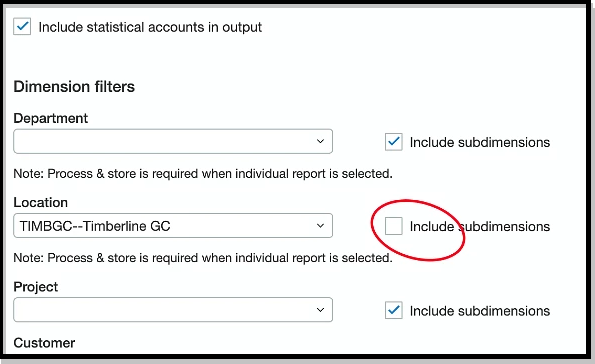 |
Examples
Example 1
=SI.BUDGETTURNOVER(
"Sage",
,
"40000",
"MASTER",
"2022-05-01",
"2022-05-31",
"300",
,
$C$6:$D$8
)
Description
Returns the budgeted turnover of the account "40000 - Revenue-Services" during May 2022, for entity "300" and budget "MASTER", for specific dimension values defined by the C6:D8 range (for example, Department and Employee).
Result
250 000
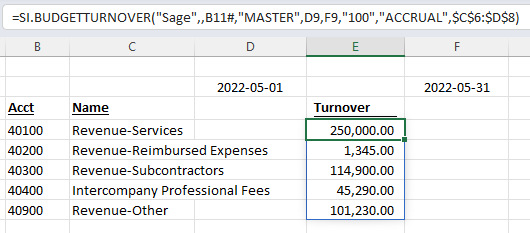
(This example uses cell references for some of the arguments)
Example 2 - Dimension Array
For examples of the use of a dimension array (available in version 2023.8 and higher), see : Example 2 - Dimension Array in the SI.OPENINGBALANCE function.
Example 3 - Empty Account Group
Assuming this configuration within Sage Intacct:
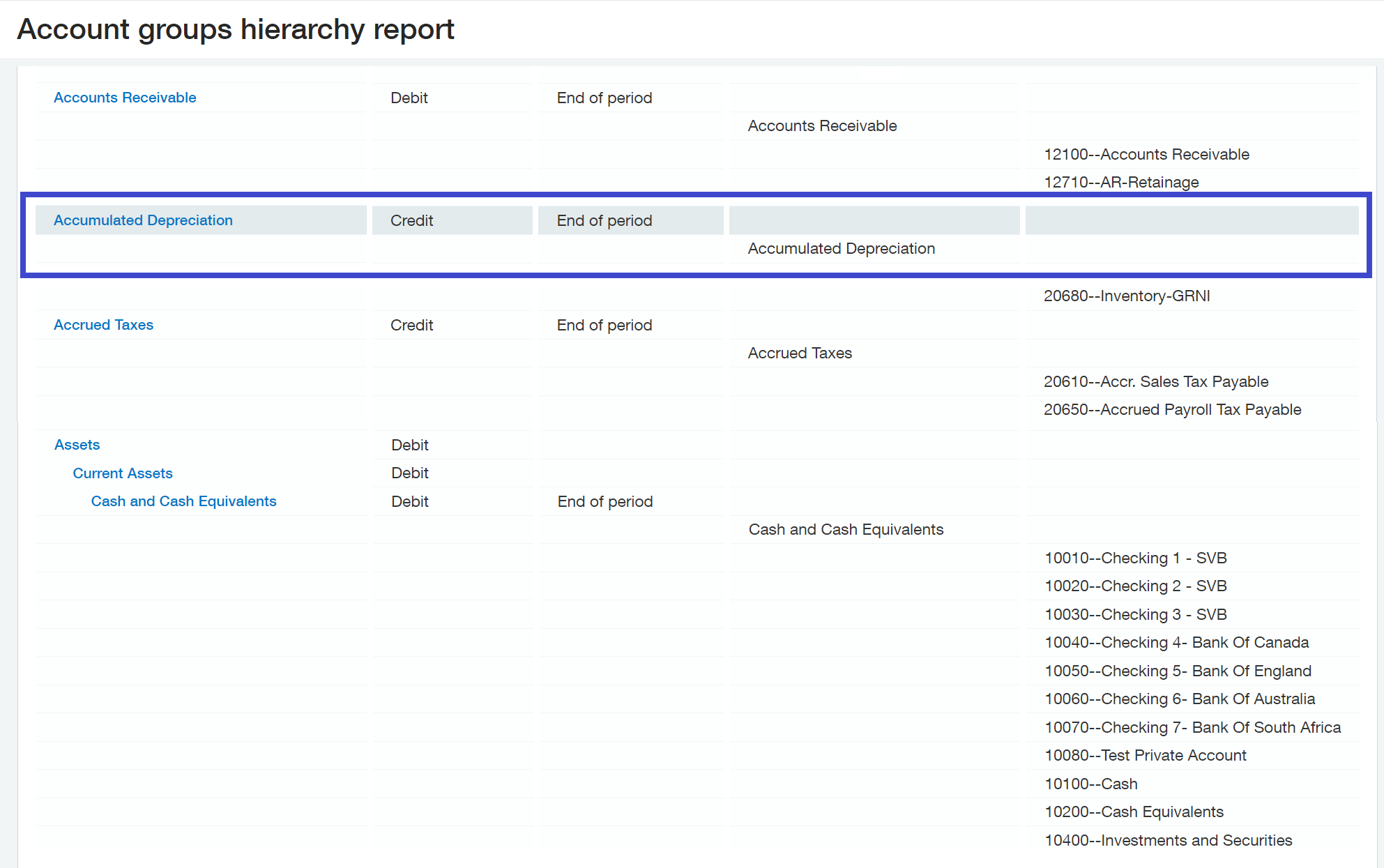
No accounts are assigned to the Accumulated Depreciation account group in this example.
=SI.BUDGETTURNOVER(
"Sage",
"Accumulated Depreciation",
,
"2019-01-01",
"2019-12-31",
"100"
)
Description
The various Velixo balance functions (SI.OPENINGBALANCE, SI.TURNOVER, SI.CLOSINGBALANCE, and SI.BUDGETTURNOVER) will return zero when there are no accounts assigned to the referenced account group.
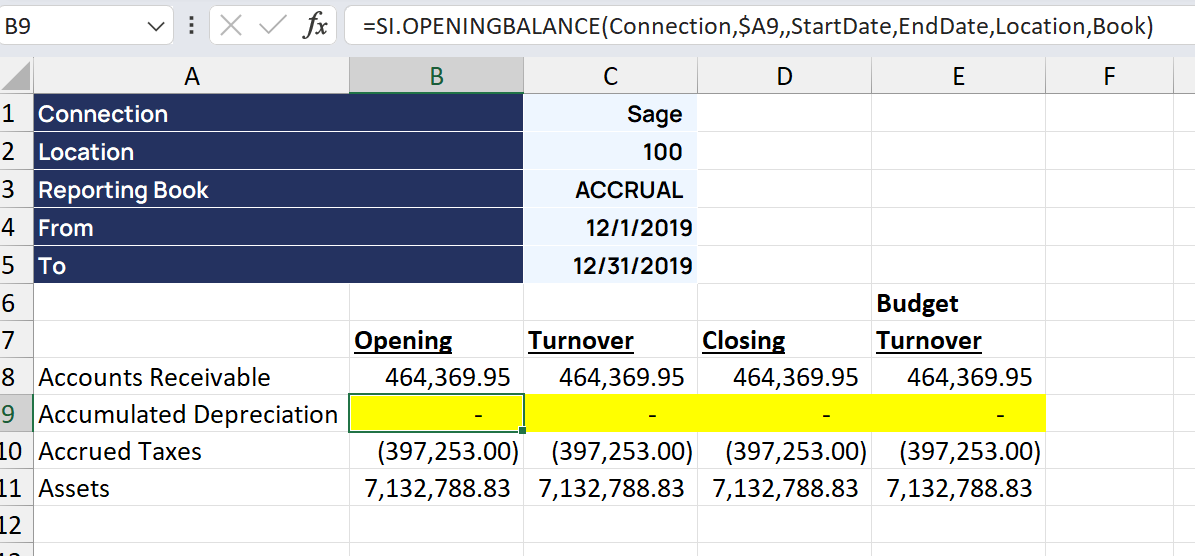
Example 4 - using Include Child Dimension Balances with Location
This function returns the Budget Turnover balance where the Dimensions and UserDefinedDimensions are not used, but where a Location is specified with the IncludeChildDimensionBalances argument:
=SI.BUDGETTURNOVER(
"Sage",
"Accumulated Depreciation",
,
"2019-01-01",
"2019-12-31",
"100",
,
,
TRUE
)e.g.,
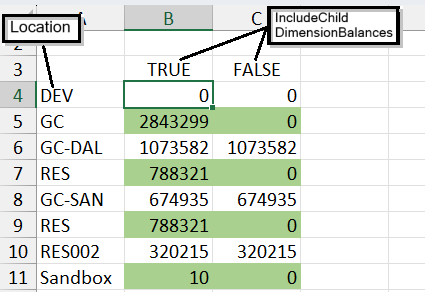
Example 5 - Include Child Dimension Balances or not
Below are balances for a specific Location, where Dimensions and UserDefinedDimensions are not used.
Customer 10007 is defined as a child account of customer 10001.
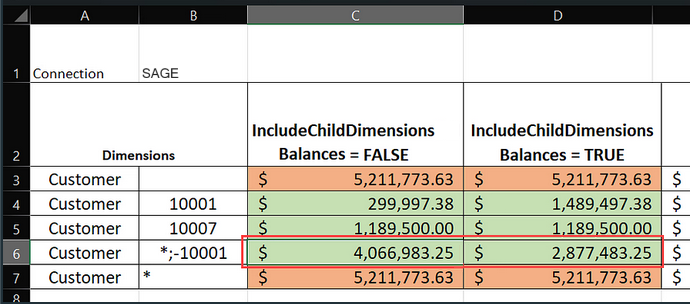
In row 6, when excluding the balance for customer 10001, you can choose whether or not to also exclude the balance for child account 10007.
Rows 3 and 7 use two techniques (blank and "*") to achieve the same result.
Example 6 - Accessing multiple Budgets at once
It is possible to access multiple budgets with a single function call.
=SI.BUDGETTURNOVER(
"Sage",
,
"40???",
$D7,
"2018-11-01",
"2019-11-30",
"100",
,
,
TRUE
)
Description
Access the budgets (whose IDs are in column D) in location 100 for the GL accounts starting with digits "40", for the date range 11/1/2018-11/30/2019.

(cell references have been used for the arguments in this example)
The first line (row 7) draws data from a single budget (Current Year - SI)
Row 8 draws data from 2 budget IDs (Master Budget - SI and Current Year - SI)
Row 9 subtracts the results of one budget (Master Budget 2020 REV 2) from the results of another budget (Master Budget 2020 REV 4)
Row 10 draws data from all "Master" budgets.
Row 11 combines the data for all "Master Budget 2020" revisions 2 through 5.
